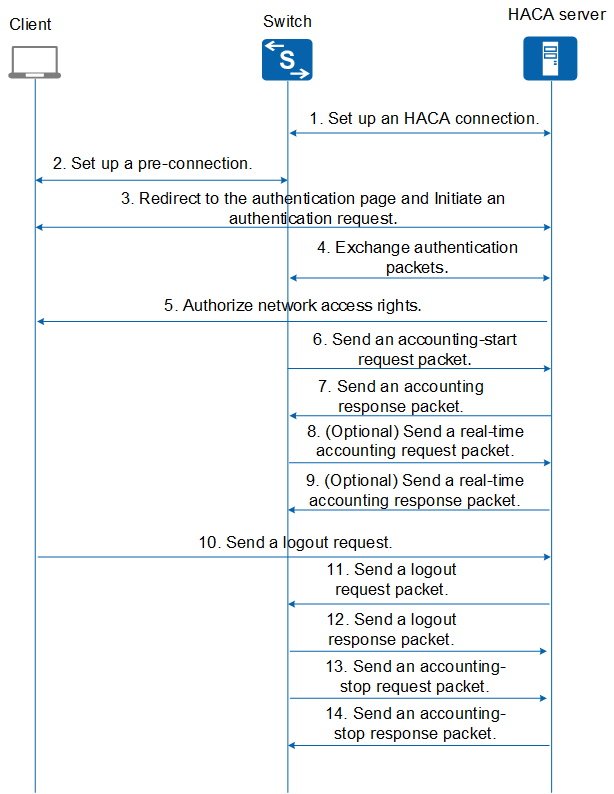HACA Authentication Process
HACA only supports MAC address-prioritized Portal authentication. iMaster NCE-Campus deployed on the cloud acts as an external Portal server and an HACA server to provide authentication and accounting services. A switch acts as a user authentication point to provide the user authentication function together with the HACA server. User authorization information is configured on the HACA server. After a user passes authentication, the HACA server authorizes network access rights to the user. Figure 1 shows the HACA authentication, authorization, and accounting process.
- An access device sets up a persistent connection and register with the HACA server using HTTP/2.
- The client and device set up a pre-connection before authentication.
- The client initiates an authentication request using HTTP. The HACA server provides a web page for the client to enter the user name and password for authentication.
- The device and HACA server exchange authentication packets.
- After the client passes authentication, the HACA server sends an authorization packet to authorize network access rights to the client.
- When the client starts to access network resources, the access device sends an accounting-start request packet to the HACA server.
- The HACA server sends an accounting response packet to the access device and starts accounting.
- (Optional) If real-time accounting is enabled, the access device periodically sends real-time accounting request packets to the HACA server, preventing incorrect accounting results caused by unexpected user disconnection.
- (Optional) The HACA server returns real-time accounting response packets and performs real-time accounting.
- The client sends a logout request.
- The HACA server sends a logout request packet to the access device.
- The access device sends a logout response packet to the HACA server.
- The access device sends an accounting-stop request packet to the HACA server.
- The HACA server sends an accounting-stop response packet to the access device and stops accounting.
